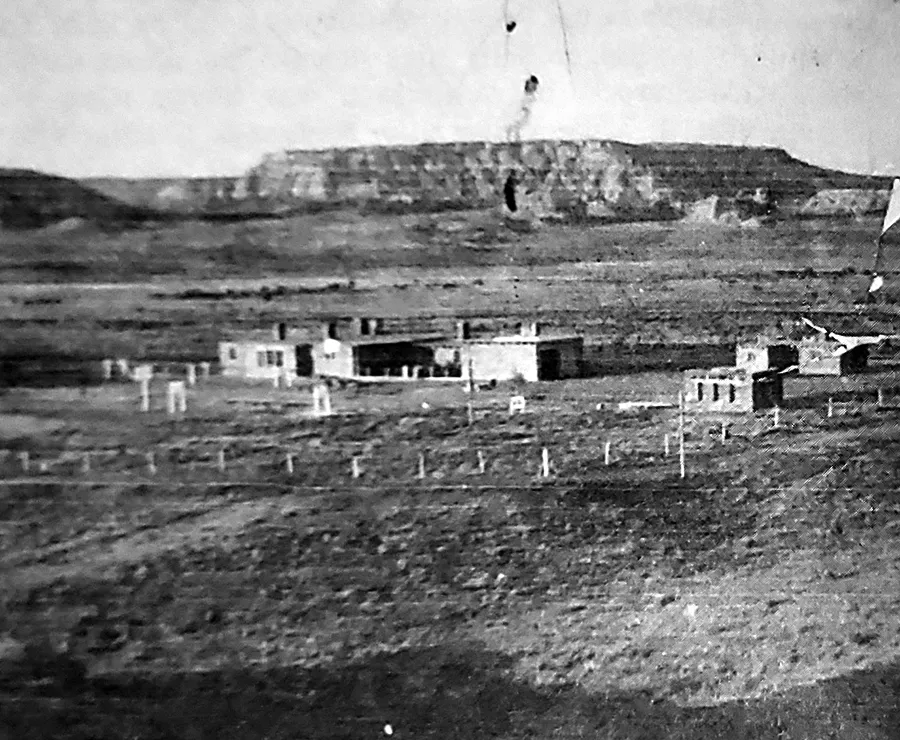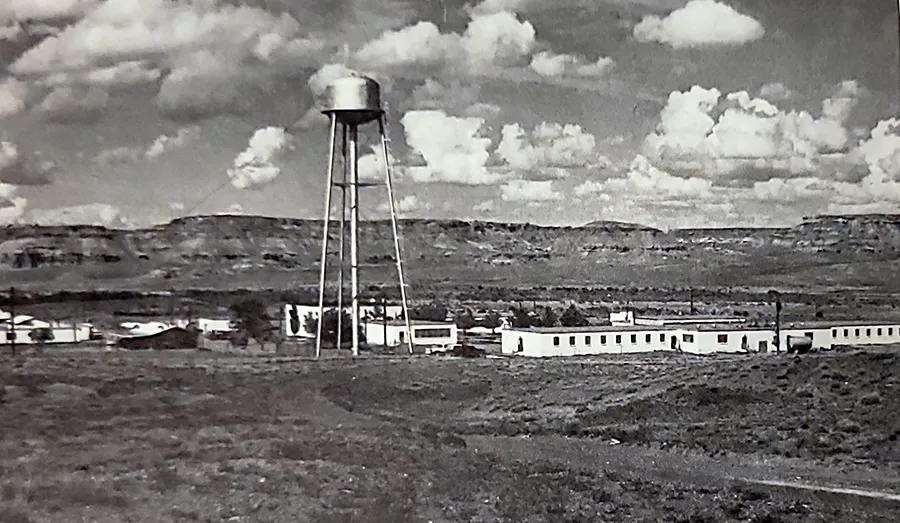Our History

In the latter part of the 1920s, the community people and leaders started planning for a community school, where their children could get a formal education. However, the nearest school was more than thirty miles away. The community knew the value and importance of education, and that their children were not getting the education they needed. Before Lake Valley Navajo School became a “Family School” shaping the Dine nation’s future leaders, it was the singular vision of community leaders. One of these elders said years ago, “we wanted our children to mount on their horses and take off and not be left behind.”
The need to remove learning and development gaps among Navajo children spawned community meetings under the shade of cottonwood trees, cliffs and trips to the Department of the Interior Indian Affairs’ Superintendent in Crownpoint, New Mexico. The original Lake Valley Navajo School building was ultimately approved. Next, came the location of the new school. Several sites were proposed, but the school's location was the result of a donation by two Navajo allottees, who gave up their portions of land so there would be a school for all children. By utilizing manpower with axes and chisels, horse teams, sandstone blocks, pine tree logs from the Ch’ooshgai Mountains, and water from the nearby “Bee ah k’e halgaii” lake, the original Lake Valley Navajo School was borne, from a strong connection to the land. The Lake Valley Navajo School site remains on those same two allotments to this day.
In the late 1950s, the Community was approved once again for a new building. Lake Valley Navajo School’s second building was built right next to the original, after a recognized need for reconstruction. This new building’s doors were opened in the Summer of 1963 with Beginners Class, First, Second, Third, and Fourth Grade classes with four classrooms, a gymnasium, cafeteria, dormitory, playground, and housing for employees.

There is an old crumbling hogan made from sandstone located on the north side of the school campus that once served as a Trading Post for the community. This same hogan was also once used as a Yei-be-chei ceremony and was a home to a local community member. The school and the trading post were the central hubs of the community. Many families received their mail at both these places, until they started receiving mail at La Vida Mission. Mail was typically delivered once a week or whenever someone went to the post office, provided that the roads were good for travel. Roads were not wide but followed the old wagon trails. Powerline was also constructed to the school. The school also used coal for its heating system.
For a while, there was only telephone service to the school, until services were added to the mission, trading post, and the chapter. Water source came from on campus. It was drilled and the water tank was built to provide water flow to the buildings.
This system served the community until recently when it connected with the community’s domestic water system. The old water pump building remains on the campus as of today, water drips from the old line and forms a small pond outside the campus that serves as a watering place for animals.

There is an old crumbling hogan made from sandstone located on the north side of the school campus that once served as a Trading Post for the community. This same hogan was also once used as a Yei-be-chei ceremony and was a home to a local community member. The school and the trading post were the central hubs of the community. Many families received their mail at both these places, until they started receiving mail at La Vida Mission. Mail was typically delivered once a week or whenever someone went to the post office, provided that the roads were good for travel. Roads were not wide but followed the old wagon trails. Powerline was also constructed to the school. The school also used coal for its heating system.
For a while, there was only telephone service to the school, until services were added to the mission, trading post, and the chapter. Water source came from on campus. It was drilled and the water tank was built to provide water flow to the buildings.
This system served the community until recently when it connected with the community’s domestic water system. The old water pump building remains on the campus as of today, water drips from the old line and forms a small pond outside the campus that serves as a watering place for animals.



